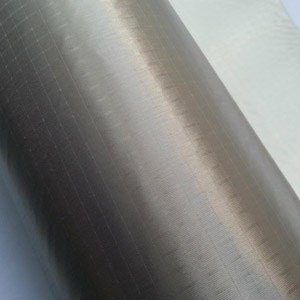RFI/EMI/EMC Conductive Fabric
Advanced Seals & Gaskets Ltd manufacture and supply a diverse range of Conductive Fabric products.
Conductive Fabric material is a lightweight fabric, impregnated with conductive metals. This material combines the flexibility and breathability of a fabric with the electrical properties of a metal, and can be used to shield complete rooms, wrapping cables, gaskets and other shielding products. Advanced Seals & Gaskets Ltd are able to manufacture a wide variety of products from Conductive Fabric including:
All of the above can be manufactured in plain or with self-adhesive backed, peel-able liner.
Key Characteristics of RFI/EMI/EMC Conductive Fabric:
- Moisture and dust protection
- Excellent surface conductivity, shielding effectiveness and corrosion resistance
- High temperature resistance
- Available in various woven and non-woven polyester or nylon substrate configurations
Product Enquiry
For information on RFI/EMI/EMC Conductive Fabric please complete the following quick enquiry or call us on +44(0)1384 252555.
Product Specification & Key Characteristics
- Colour: Anthracite
- Density: <90KG/M³
- Fire Propagation Index: <12
- Operating Temperature: -30°C to 100ºC
- Thickness: 1mm – 100mm (can be laminated for greater thickness)
Full technical data can be supplied upon request,
or downloaded from our online portal.
What are Conductive Fabric material
Conductive fabric materials are textiles or fabric that have been specially designed and engineered to exhibit electrical conductivity and other conductive properties. They are typically made by incorporating conductive elements into the fabric structure, allowing them to conduct electricity or dissipate static charges. These materials find application in a variety of industries and applications where electrical conductivity, electromagnetic shielding, or antistatic properties are required. Here are some common types of conductive fabric materials:
Metal-Coated Fabrics: These fabrics have a layer of metal, such as copper, silver, or aluminum, coated onto the fabric surface. The metal layer provides excellent electrical conductivity and is often used for electromagnetic shielding applications.
Conductive Yarns and Threads: Conductive yarns and threads are woven or sewn into fabric to create conductive pathways. They can be made from materials like stainless steel, copper, or other conductive materials. They are used in applications like wearable technology, EMI/RFI shielding, and heating elements.
Carbon-Based Fabrics: Fabrics impregnated or coated with conductive carbon materials, such as carbon nanotubes or graphene, provide electrical conductivity while maintaining flexibility and lightweight properties. These fabrics are used in various high-tech applications.
Advantages of Using Conductive Fabric material
Wearable Technology: Conductive fabric materials are commonly used in wearable technology and smart textiles. They enable the integration of conductive traces and sensors into clothing and accessories for applications like health monitoring, fitness tracking, and communication.
Heating Elements: Some conductive fabrics have resistance properties that allow them to generate heat when an electrical current is applied. These fabrics are used in heated clothing, underfloor heating, and other heating applications.
Electrodes and Sensors: Conductive fabrics can be used as electrodes for medical devices, such as ECG sensors and TENS units, as well as in capacitive touchscreens and other sensor applications.
Flexibility and Durability: Conductive fabrics are often flexible, lightweight, and durable, making them suitable for applications that require materials to conform to irregular shapes or withstand wear and tear.
Safety and Grounding: In industrial settings, conductive fabrics can be used for grounding and safety purposes. They help to prevent static electricity buildup and ensure a safe environment, particularly in locations with flammable or explosive materials.
Why use Conductive Fabric material?
Conductive fabric materials are designed for a wide range of applications where electrical conductivity, electromagnetic shielding, and other conductive properties are required. Here are some of the key reasons to use conductive fabric materials:
Electromagnetic Shielding: Conductive fabrics can be used to create shields and enclosures that block electromagnetic interference (EMI) and radio frequency interference (RFI). This is important in applications like electronics, telecommunications, and medical devices to ensure that sensitive equipment is not affected by external electromagnetic signals.
Antistatic Properties: Conductive fabrics can be used in environments where static electricity needs to be dissipated or controlled. They help prevent static discharge, which can damage electronic components or cause safety hazards in certain industries, such as electronics manufacturing and cleanrooms.
EMI Gaskets and Seals: Conductive fabrics are used to create gaskets and seals for electronic enclosures to ensure they are effectively shielded against EMI and RFI. These gaskets provide a conductive barrier to prevent electromagnetic interference from entering or leaving a device or enclosure.
Please contact us using the form below or by calling us on +44(0)1384 252555.






















